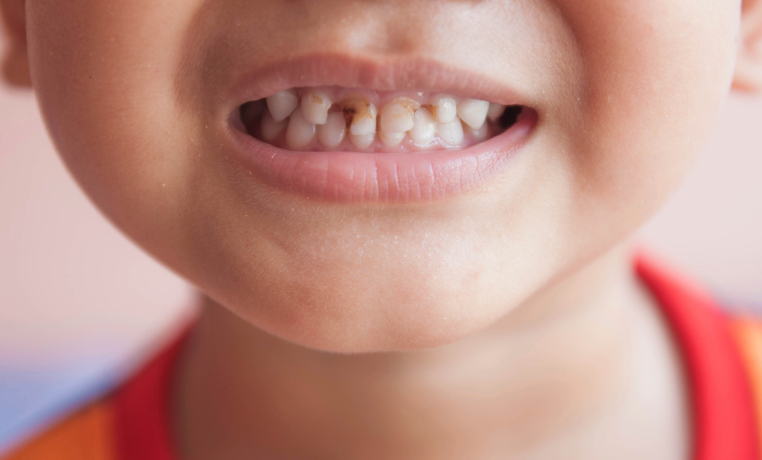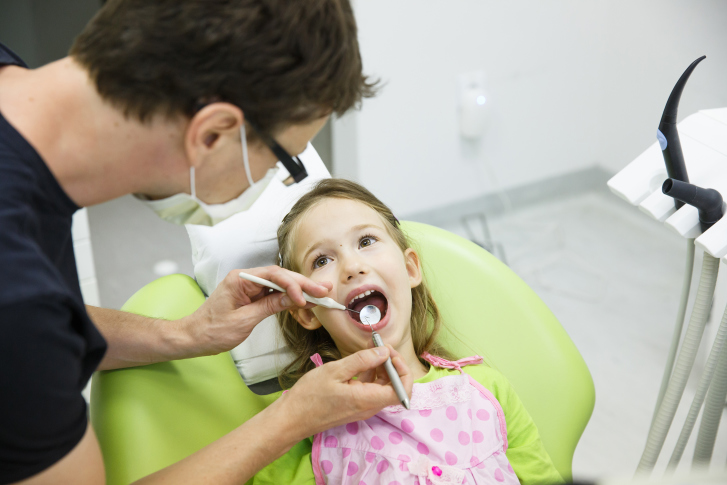In the not too distant past, it was accepted that pretty much all children would have tooth decay and require dental fillings. Fortunately, this is no longer the case. In fact, we are approaching a time when we can start to imagine a future in which all children have a cavity-free childhood.
In today’s society, over half of Canadian children have had tooth decay. This is a far cry from the pre-fluoride days of the 1940s and 1950s when virtually every child had cavities and in most cases had many cavities. While this should be seen as a victory for preventive dentistry it is still a long way from the goal of no cavities for all.

The most common chronic disease of early childhood is tooth decay or cavities. It is caused by bacteria in the mouth when food and liquids containing sugar combine with bacteria to produce acid. This acid attacks the teeth and can cause cavities which require dental fillings when the decay has gone so far that it cannot be reversed.
Why should parents care about decay in their baby’s teeth? Decaying baby teeth can cause pain and prevent children from being able to eat, sleep, speak and learn properly. Tooth decay is easily preventable - there is no rule that a child has to have even one cavity. It is really all about good habits and starting those habits early in life:
- Even before a child has teeth, their gums should be wiped after each feeding with a clean, damp washcloth. This gets parents and children into the habit of regular cleanings and gives teeth a clean place to come into. When they have teeth, you can start to use a wet toothbrush.
- The Canadian Dental Association recommends a first dental visit by the age of one. Take your child to the dentist for a quick checkup by their first birthday. Start dental visits early, so your child will learn the importance of good oral health care and feel comfortable visiting the dental office.

A cavity-free childhood can only be achieved by a combination of at-home oral hygiene, regular visits to a dentist and a well-balanced diet:
- Daily oral hygiene involves brushing at least twice a day and flossing at least once a day. Ask your family dentist about the right age to start using fluoride toothpaste. Children will need help brushing and flossing until they are about six years old and should be supervised until the age of nine. At a minimum, they should brush for two minutes twice a day – “2 for 2”.

- Fluoride is big part of how to prevent cavities and one of the major reasons for the reduction in tooth decay that we have seen in the last 50 years. Fluoride is available in water, toothpaste, rinses and can be professionally applied at dental offices as a gel, foam or varnish. Fluoride works to prevent cavities by making the tooth enamel, or outer layer, stronger. This can reverse the cavity process in the early stages of tooth decay so that your child doesn’t need a dental filling.
- Another type of preventive care that you can only get at a dental office is dental sealants which are plastic protective coatings bonded to the pits and grooves of back teeth, also called molars. These are recommended in permanent first and second molars for preventing decay.
- A well-balanced diet is important for overall health as well as oral health. Choose snacks which are both nutritious and good for teeth, such as carrot sticks and cheese cubes. And limit the number of times per day that children eat or drink sugars.
Of course, the risk of tooth decay doesn’t end when you become an adult. The need for good oral hygiene and regular professional visits remains constant throughout life. Visit our Public Health website for more information on oral health and how Public Health can help, or call Public Health at 1-800-265-7293. Programs for free dental care are available for children up to 17 years of age.
Finally, I’d like to leave you with 5 easy tips for a cavity-free childhood:
- Start brushing your child’s teeth as soon as they appear in the mouth
- Brush at least two times a day (including bedtime), and floss nightly for them
- Between mealtimes, offer children water to drink if they are thirsty
- Never put children to bed with any liquid other than water
- Visit the dental office regularly and feel free to ask about how to best prevent tooth decay
